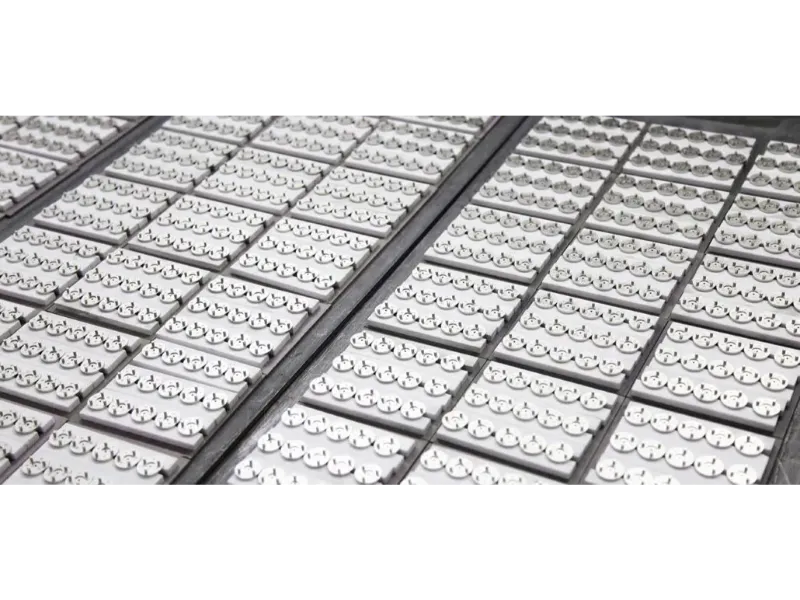High-Quality MIM Parts | Precision Manufacturing & Reliable Solutions
In the realm of modern manufacturing, Metal Injection Molding (MIM) has become a game-changer, offering high-quality, precision-engineered components for various industries. This article delves into what makes MIM parts stand out, the advantages they offer, and how they compare to other manufacturing methods. Whether you’re looking to understand the difference between forged and MIM parts or exploring the meaning behind MIM, this guide covers it all.
Section 1:Introduction
1.1.What is an MIM Part?
Metal Injection Molding (MIM) is a sophisticated manufacturing process that combines the best of both powder metallurgy and plastic injection molding. Manufacturers mix fine metal powders with a binder to create a feedstock, which they then inject into molds to form intricate parts. After molding, they remove the binder through debinding and sinter the remaining metal to achieve the final form. This process produces High Quality MIM Parts with excellent precision and durability.
MIM parts are known for their high precision and complexity, allowing for the production of complex geometries and tight tolerances that are difficult to achieve with other methods.
1.2.What Does MIM Mean in Manufacturing?
In manufacturing, MIM stands for Metal Injection Molding. This process combines the principles of plastic injection molding with metal powders to produce metal parts. The primary benefits of MIM include the ability to produce complex shapes with high precision and to work with a wide range of metals, resulting in High Quality MIM Parts suitable for demanding applications.
1.3.MIM Materials: What Are They?
MIM materials consist of fine metal powders mixed with a binder to form a feedstock. Common materials used in MIM include:
- Stainless Steel: Offers excellent corrosion resistance and strength, commonly used in industrial and medical applications.
- Carbon Steel: Offers good mechanical properties and is cost-effective.
- Titanium: Known for its high strength-to-weight ratio, making it ideal for aerospace and high-performance applications.
- Copper Alloys: Used for their high thermal and electrical conductivity, suitable for electronics and electrical components.
1.4.Are MIM Parts Bad?
No, MIM parts are not inherently bad. In fact, they offer several advantages:
- Complexity: MIM can produce complex shapes that would be challenging or impossible with other methods.
- Precision: MIM offers high dimensional accuracy and repeatability.
- Cost-Efficiency: For high-volume production, MIM can be more cost-effective compared to other methods.
1.5.What Does MIM Mean in Metal?
In metalworking, MIM refers to the Metal Injection Molding process. This process involves injecting a metal powder feedstock into a mold to create parts, which are then debound and sintered to achieve their final form. It enables high precision and the production of complex geometries, resulting in High Quality MIM Parts for a variety of applications.
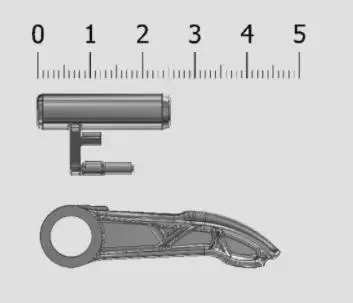
Section 2: MIM vs. Forged Parts: Key Differences
1. Manufacturing Process:
- Forged Parts:Forging involves shaping metal using compressive forces. This method is typically used for large, robust components and is excellent for enhancing the mechanical properties of metals.
- MIM Parts:Unlike forging, MIM involves molding fine metal powders into complex shapes. It allows for higher precision and the production of parts with intricate details.
2. Material Efficiency:
- Forged Parts: Forging can result in material wastage as excess material is cut away.
- MIM Parts: MIM is highly efficient with material use, generating less waste and allowing for the creation of parts with complex features that would be difficult to achieve with traditional forging.
3. Production Volume:
- Forged Parts: Forging is generally more suited for lower production volumes due to higher setup costs.
- MIM Parts: MIM is ideal for high-volume production, offering cost benefits when producing large quantities of parts.
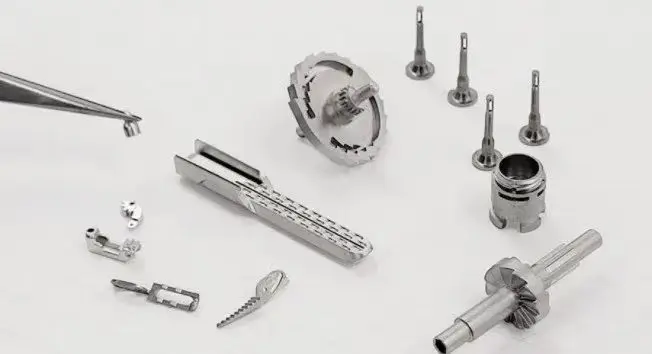
Section 3: MIM Parts vs. Cast Parts
1. Precision and Complexity:
- MIM Parts:MIM is superior in producing parts with high precision and complex geometries, often with tight tolerances.
- Cast Parts:Casting can be less precise, especially for intricate designs, and often requires additional machining to meet specifications.
2. Mechanical Properties:
- MIM Parts: The sintering process in MIM results in fine-grained structures that can offer good mechanical properties.
- Cast Parts:Cast components may have larger grain structures, which can affect their mechanical performance.
3. Surface Finish:
- MIM Parts: MIM parts typically have a smooth surface finish straight from the mold.
- Cast Parts:Cast parts often require additional finishing to achieve a similar surface quality.
4. MIM vs. Cast: Which is Better?
The choice between MIM and casting depends on the specific application and requirements:
- MIM: Best for complex, high-precision parts that require tight tolerances and high production volumes.
- Casting: Suitable for larger, simpler components or when working with materials that are difficult to process with MIM.
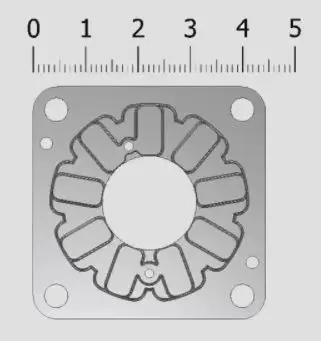
Section 4: Applications of Metal Injection Molding (MIM) Parts
Metal Injection Molding (MIM) is a versatile manufacturing process that offers significant advantages in producing high-precision, complex metal parts. Its ability to create intricate geometries with excellent mechanical properties makes MIM ideal for producing High Quality MIM Parts used across various industries and applications.
4.1.Medical Devices
l Surgical Instruments
MIM is ideal for manufacturing surgical instruments due to its ability to produce parts with complex geometries and tight tolerances. Instruments such as scalpels, forceps, and scissors require high precision and excellent mechanical properties, which MIM provides.
l Orthodontic Brackets
Orthodontic brackets are small, complex components that benefit from the precision and strength offered by MIM. The process allows for the production of brackets with intricate designs and superior durability, essential for effective orthodontic treatments.
l Implantable Devices
MIM is used to produce implantable devices such as bone screws, plates, and other fixation devices. These components require biocompatible materials and high strength, both of which are achievable through the MIM process.
4.2.Automotive Industry
l Engine Components
MIM is widely used in the automotive industry for producing high-performance engine components. Parts such as fuel injector nozzles, turbocharger vanes, and valve lifters benefit from the process’s ability to create complex shapes and withstand high stress and temperatures.
l Transmission Parts
The precision and durability of MIM-made parts make them suitable for transmission components like gears, clutch plates, and shift forks. These parts require high wear resistance and exact dimensional tolerances to ensure optimal performance.
l Sensor Housings
Automotive sensors, which are critical for modern vehicles’ safety and efficiency, often require housings that are both lightweight and robust. MIM allows for the production of these housings with precise dimensions and excellent mechanical properties.
4.3.Consumer Electronics
l Smartphone Components
Smartphones contain numerous small, intricate parts that benefit from the precision and efficiency of MIM. Components such as connectors, SIM card trays, and internal brackets are commonly produced using MIM due to the process’s ability to create detailed and durable parts.
l Laptop Parts
MIM is used to manufacture various components within laptops, including hinges, brackets, and thermal management parts. The process ensures these parts are both lightweight and strong, contributing to the overall performance and longevity of the devices.
l Wearable Devices
Wearable technology, such as smartwatches and fitness trackers, requires small, complex components that MIM can efficiently produce. Parts like casings, buttons, and connectors benefit from MIM’s ability to create detailed and robust components.
4.4.Aerospace Industry
l Lightweight Components
The aerospace industry demands lightweight and high-strength components to improve fuel efficiency and performance. MIM is used to produce parts such as brackets, housings, and fasteners that meet these stringent requirements while allowing for complex designs.
l High-Temperature Parts
Aerospace components often need to withstand extreme temperatures and pressures. MIM is capable of producing parts with the necessary heat resistance and mechanical properties, making it suitable for turbine blades, engine components, and exhaust system parts.
l Precision Instrumentation
MIM is also employed in the production of precision instrumentation used in aerospace applications. These instruments require components with tight tolerances and exceptional reliability, which are achievable through the MIM process.
4.5.Industrial Applications
l Tooling and Machinery
MIM is used to produce high-precision tooling and machinery components, including cutting tools, molds, and machine parts. These components require high hardness, wear resistance, and complex geometries, all of which are achievable with MIM.
l Power Tools
Components for power tools, such as gears, shafts, and housings, benefit from the strength and precision offered by MIM. The process allows for the production of durable and efficient parts that contribute to the overall performance of power tools.
l Fluid Handling
MIM is used to manufacture components for fluid handling systems, including pumps, valves, and fittings. These parts require precise dimensions and high corrosion resistance, which MIM can provide using appropriate materials and processes.
4.6.Defense and Firearms
l Firearm Components
MIM is widely used in the defense and firearms industry for producing components such as triggers, hammers, and ejectors. The process allows for the creation of parts with complex shapes and high strength, essential for reliable firearm operation.
l Military Equipment
Components for military equipment, such as communication devices, night vision gear, and weapon systems, benefit from the precision and durability of MIM. The process ensures these parts meet the demanding requirements of military applications.
l Ammunition
MIM is also used to produce components for ammunition, including bullet casings and projectile parts. These components require high precision and consistency, which are achievable through the MIM process.
l MIM Parts 1911: A Case Study
In the context of firearms, specifically the 1911 pistol, MIM parts are used in various components such as hammers, triggers, and safeties. The use of MIM in these parts allows for precise manufacturing and consistency, contributing to the overall reliability and performance of the firearm.
4.7.Jewelry and Fashion Accessories
l Intricate Designs
The ability of MIM to produce complex and detailed parts makes it suitable for creating intricate jewelry and fashion accessories. Designers can achieve unique shapes and fine details that are difficult to replicate with traditional manufacturing methods.
l Customization
MIM allows for the production of customized pieces in smaller quantities, making it ideal for bespoke jewelry and limited-edition accessories. The process’s flexibility enables designers to experiment with different materials and finishes.
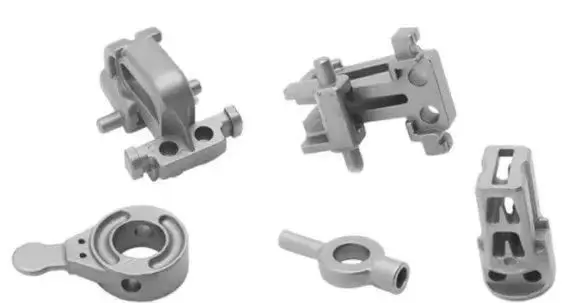
Conclusion
Metal Injection Molding (MIM) represents a significant advancement in manufacturing technology, offering precision, efficiency, and versatility. By understanding what MIM parts are, how they differ from other methods like forging and casting, and the materials involved, manufacturers and engineers can make informed decisions about their production needs. Whether you’re working with firearms, aerospace components, or industrial machinery, MIM provides a reliable solution for producing high-quality, intricate metal parts.
For more information on MIM parts and how they can benefit your manufacturing processes, contact us to discuss your specific requirements.

